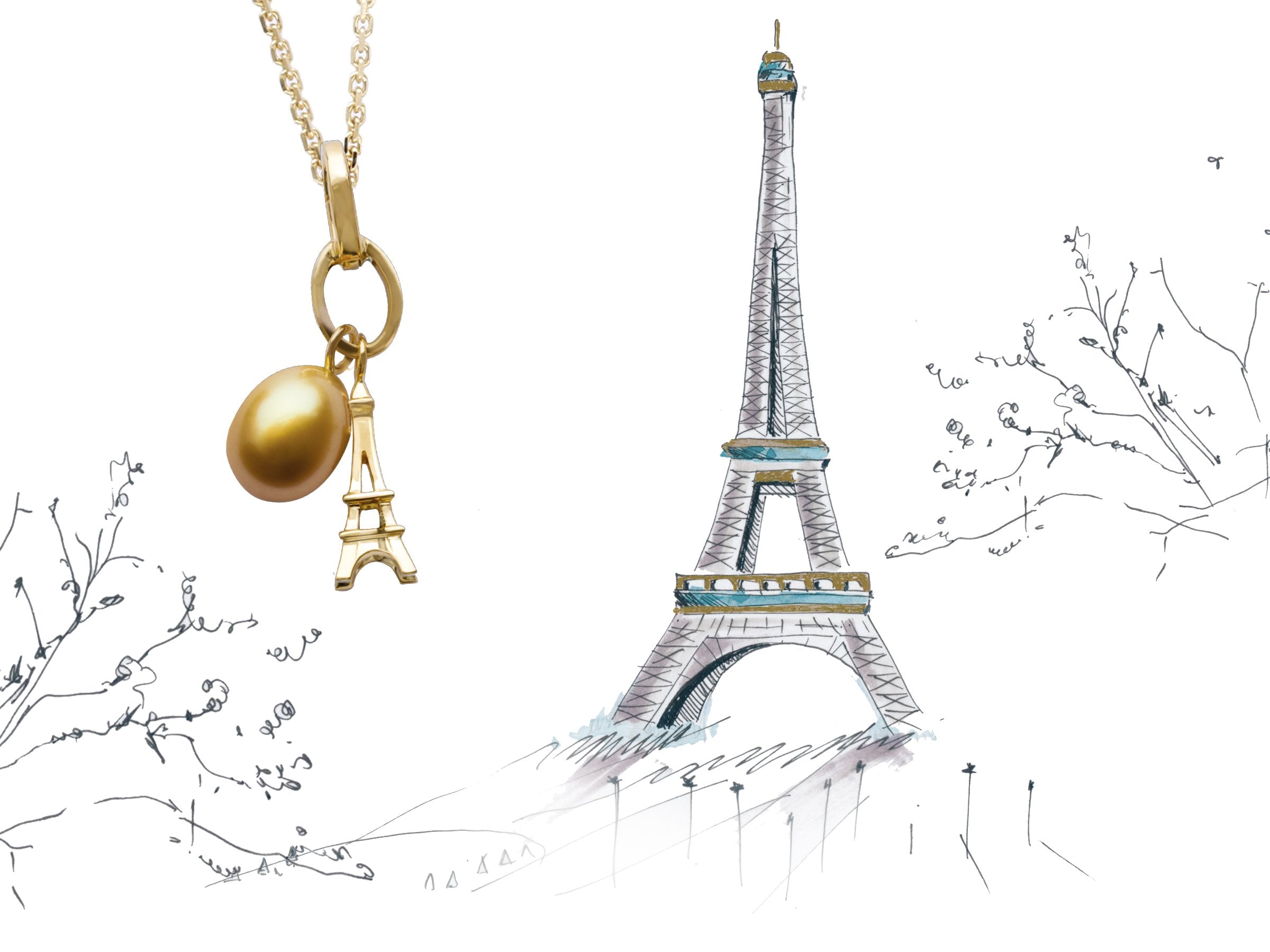A tour of Paris through its golden icons

The city of Paris has played host to many of history’s grandest moments, and has figured in many well-loved films, books, and other works of the imagination. Add to this, Jewelmer has captured the glint and allure of the city through the playful charms of La Parisienne. As we celebrate the spirit of France this Bastille Day, we pay tribute to its enchanted capital and give you stories of Paris, told through its golden icons.
Eiffel Tower

Unveiled in 1889, the Eiffel Tower served as the entrance to the Exposition Universelle, a world fair held a century after the storming of Bastille. Over a hundred artists competed to design the monument, yet it was Alexandre-Gustave Eiffel and his structural engineer Maurice Koechlin—the same pair who worked on the Statue of Liberty’s metal armature—who was commissioned to create what is now arguably France’s most lustrous icon. Near the top of the tower, Eiffel had once kept an apartment that housed a grand piano and welcomed guests like Thomas Edison.
Rue de la Paix

Father of haute couture Charles Frederick Worth opened the first couture house along Rue de la Paix in 1858. The boutique named Worth and Bobergh enduringly influenced the way couturiers worked with their clients. Instead of coming to their homes, Worth welcomed prominent figures the likes of Queen Victoria, the Rockefellers, and the Vanderbilts into the boutique, which quickly became a gathering place for high society. Now home to brands like Alain Figaret, Repetto, Vacheron Constantin, Charvet, and other precious jewelers, Rue de la Paix continues to be a bustling fashion district to this day.
Moulin Rouge

Moulin Rouge stoked the swell of Bohemianism in the Belle Époque. In its heyday, post-impressionist painter Henri de Toulouse-Lautrec was one of the most frequent guests of the cabaret, where he met and painted its revelers, its rising artists, and its dancers who popularized the cancan. His painting “At the Moulin Rouge,” in particular, included French writer Édouard Dujardin, photographer Maurice Guibert, and the dancer La Goulue. In the dark, enchanting haze of Toulouse’s works, he immortalized not only the characters of Fin de Siecle France, but the pomp and spirit of its fabled cabaret.